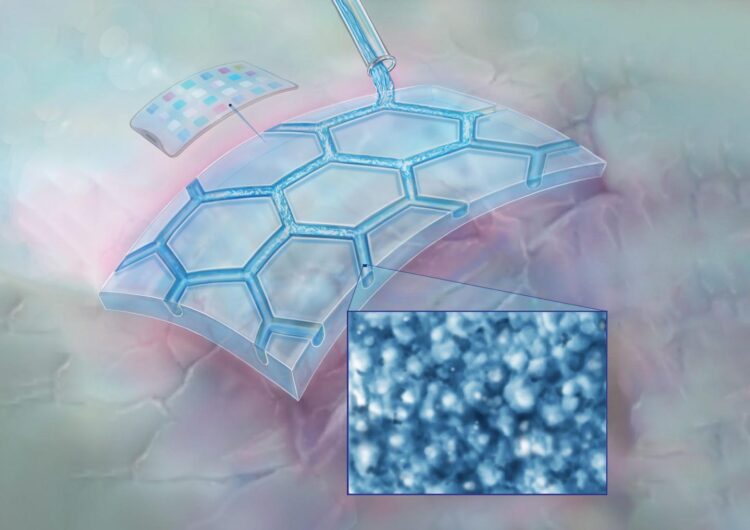New research shows particle-free silver microgrid outperforms other flexible high-performance transparent electrodes
The future of electronic displays will be thin, flexible and durable. One barrier to this, however, is that one of the most widely used transparent conductors for electronic displays–indium tin oxide (ITO)–doesn’t perform as well on larger areas and can crack and break down with wear. Indium is also a rare earth mineral, which is relatively scarce, and the process to create ITO requires high energy consumption and expensive equipment.
One emerging alternative is metal “microgrid” conductors. These microgrids can be customized to their application by varying the microgrid width, pitch and thickness, and they can be made with a variety of metals.
New research from the University of Pittsburgh Swanson School of Engineering investigates the use of microgrids printed with particle-free silver inks, demonstrating its advantages when compared with other particle-based inks. The paper is published in ACS Applied Electronic Materials and is featured on a supplemental cover of the journal.
“Among the alternatives to ITO being explored, metal microgrids are an attractive option because of their low sheet resistance and high transparency, which is well suited to many optoelectronic applications,” explained Paul Leu, Associate Professor of Industrial Engineering, whose Laboratory for Advanced Materials at Pittsburgh (LAMP) conducted the research. “However, because of the fabrication processes available, it’s difficult to perfect. Our research focuses on addressing key issues in fabricating silver microgrids using particle-free silver ink, and we found it has some key advantages over particle-based inks.”
The project is a continuation of the LAMP lab’s collaboration with Electroninks, a technology company in Austin, Texas. The company produces a circuit drawing kit called Circuit Scribe, which uses conductive silver ink to allow users to create working lights with circuits drawn on paper. Circuit Scribe sparked Leu’s initial interest in working with the company to develop their particle-free metal ink as a way to address some of the limitations of ITO.
The researchers found that the particle-free fabricated microgrids were more reliable than those printed with particle-based inks, showing better transparent electrode performance, lower roughness, and better mechanical durability, which is necessary for flexible displays. To test its durability, the researchers performed several tests, including adhesion, bending and folding tests.
“These microgrids outperformed both particle-based ink-formed microgrids and ITO microgrids in all of our tests,” said lead author and PhD student, Ziyu Zhou. “Our research paves the way for better performing, less expensive and more durable displays that don’t rely on the mining of rare earth minerals.”
In addition to evaluating the microgrids as a replacement for ITO in OLEDs, the team is evaluating them for transparent antennas and electromagnetic interference (EMI) shielding.
###
The research paper, “Polymer-Embedded Silver Microgrids by Particle-Free Reactive Inks for Flexible High Performance Transparent Conducting Electrodes,” (DOI: 10.1021/acsaelm.1c00107) was coauthored by Ziyu Zhou, S Brett Walker, Melbs LeMieux and Paul W Leu.
The supplemental cover, designed by Randal McKenzie, is featured in the May 25th issue of the journal.
Media Contact
Maggie Pavlick
[email protected]
Original Source
https:/
Related Journal Article
http://dx.





